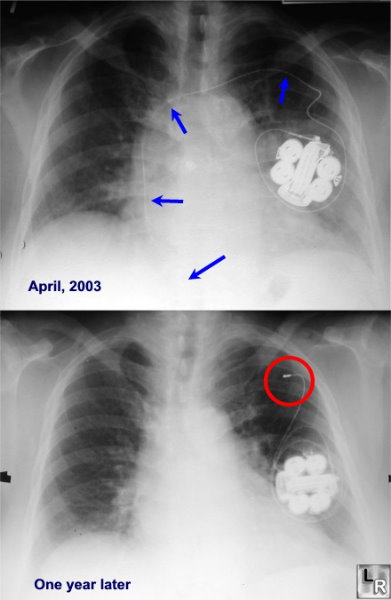|
|
Twiddler's Syndrome
- Rare occurrence
- Shape and weight of pacemakers today
- Subconscious, inadvertent or deliberate rotation of pacemaker in its subcutaneous pocket
- Older women may be at particular risk
- Loose subcutaneous tissue
- Lead retracts and begins to wrap around the pacemaker itself
- Dislodging lead from endocardium and causing
- Malfunction of device
- Pacemaker may begin to stimulate diaphragm, vagus or phrenic nerve, pectoral muscles or brachial plexus
- Imaging findings
- Chest x-ray shows looping of wires around pacer
- Retraction and change in position of tip if wire or catheter
- May result in sudden cardiac arrest due to conduction disturbances
- Also occurs with automatic implantable cardiac defibrillators (AICDs)

Twiddler's Syndrome: Frontal
chest radiograph in top photo demonstrates pacemaker lead
extending into right ventricle (blue arrows); bottom photo, one year
later, shows wire lead is wound around pacer and tip of
ventricular lead has retracted into the left subclavian vein (red circle)
|
|
|